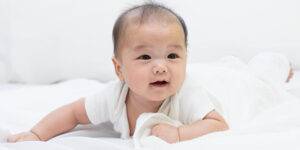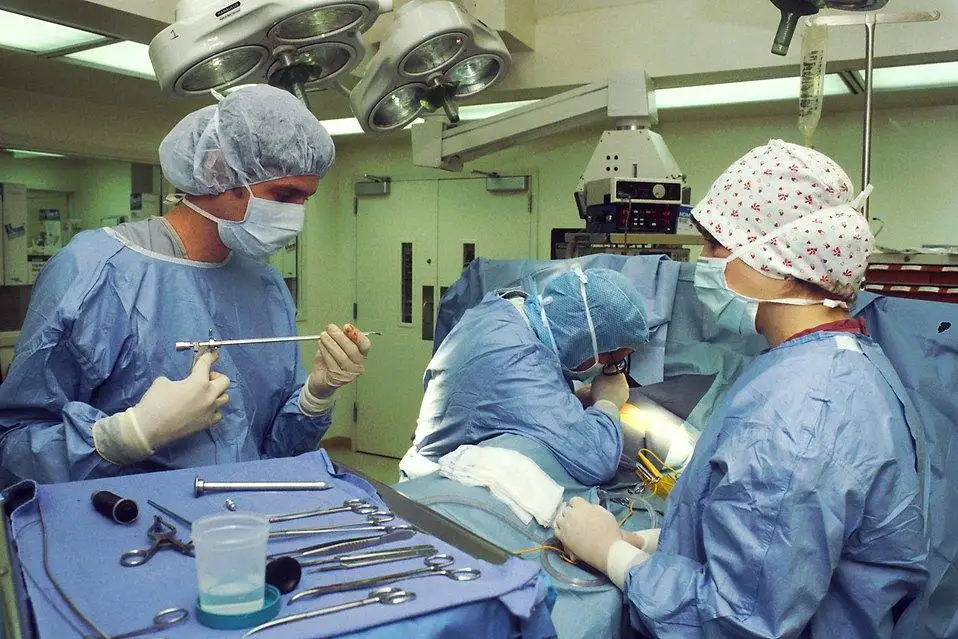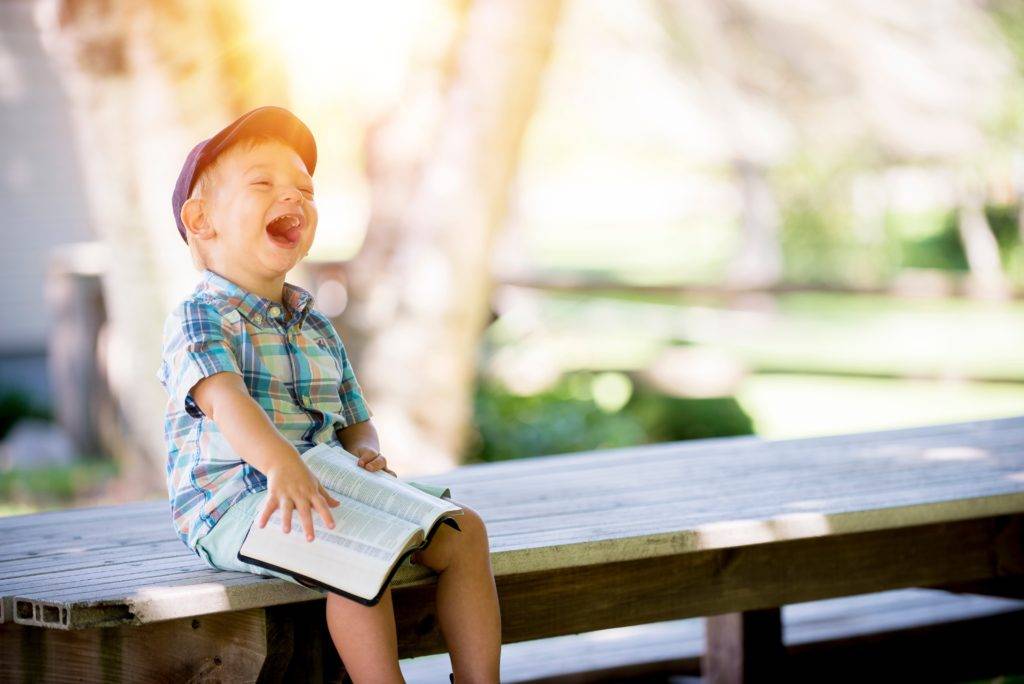- Loading the Elevenlabs Text to Speech AudioNative Player...Facebook
-
Messenger
-
Twitter
-
Pinterest
-
Linkedin
-
Email
Table of Contents
We’ve seen adorable babies with cute stud earrings. Some parents choose to have their little one’s ears pierced while they’re still infants, while others wait until their kid is a little older. It’s completely a parental choice when it comes to baby ear piercing.
While we’re not here to take a hardline stance, piercing your baby’s ears is completely a personal preference. Depending on who you ask, some people show support while others strongly oppose them. Let’s dig deep. Keep reading!
We will try our best to provide you with all the necessary information you need to make an informed decision, that is, from a pediatric point of view.
Baby Ear Piercing: What is the Recommended Age?

Is there a specific time when you should have your baby’s piercings done? In a nutshell, it depends. While age doesn’t matter, pediatricians advise you to wait until your baby reaches four months old and has finished two tetanus shots.
However, the American Academy of Pediatrics (AAP) doesn’t stand firm on the appropriate age for kids. While the group advises waiting until a child is old enough to handle piercing aftercare alone, it doesn’t explicitly prohibit it.
The AAP acknowledges that piercings are safe at any age if the procedure is done with sterile equipment and techniques. For proper healing, the group emphasizes that adequate aftercare should be carefully performed.
Parents should not assume that the healing will proceed on its own, let alone with their kid’s playful hands and endlessly fiddling their newly-pierced ears.
What to Consider Before Piercing Your Baby’s Ears
Do you want to know if it’s a good time to get your baby’s ears pierced? Check out the list before making your decision:
1. Development of Your Baby

Babies will not remember the discomfort of a piercing. And a 2-month-old will not have the dexterity to fidget with healing lobes, whereas a 2-year-old almost certainly will. So, consider the pain management of your child.
2. Baby Piercing Maintenance
If you decide to pierce your baby’s ears, you must care for them regularly for six weeks to avoid infection. Are you willing to regularly care for and practice aftercare tips once the procedure has been done?
3. Tradition, Cultural Practices, and Social Norms
For many cultures around the globe, piercing babies’ ears is a right of passage. Does your culture allow your baby to have piercings, or is it not allowed due to cultural practices? Here, cultural practices and traditions always take precedence.
4. Health Considerations, Hygiene Concerns, and Infection Risks
Unpierced ears are less likely to become infected, regardless of how small the risk is. If your toddler or young child touches the piercing, the risk of infection increases. We should not discount the fact that kids love to touch and wiggle anything new in their bodies.
Why Do Some Parents Choose to Pierce Their Baby’s Ears Despite Potential Risks?
Many parents opt to pierce their baby’s ears for a variety of reasons, even though they are aware of potential risks such as infections or complications. Here’s a closer look at why.
Cultural and Family Traditions
In many cultures, ear piercing is not just a fashion statement but a deeply rooted tradition. For example, in Indian culture, ear piercing at a young age is a common practice and is often part of important ceremonies. Similarly, Latin American families frequently pierce baby ears shortly after birth as a rite of passage.
Aesthetic Choices
Some parents appreciate the aesthetic of earrings on their children and want them to enjoy this form of adornment from an early age. They might believe it enhances their baby’s appearance and prefer to have the procedure done when the child is too young to remember or be affected by the discomfort.
Easier Healing Process
Infants have a remarkable ability to heal quickly. Parents sometimes choose piercing early on to take advantage of this natural healing process. Younger skin tends to recover faster than older skin, potentially reducing the duration of any complications.
Reducing Anxiety
Performing the piercing at a younger age can also minimize anxiety for both the child and the parents. Infants may experience momentary discomfort but generally won’t have the same anticipatory anxiety that older children might, making the overall experience less stressful.
Keeping with Peer Groups
In some cases, parents might decide to pierce their baby’s ears to ensure they won’t feel left out among their peers in the future. Popular trends and peer influence can play a significant role in such decisions.
Considering the Risks
While the motivations are varied and personal, it’s essential for parents to consider potential risks, such as infections or allergic reactions. Consulting with healthcare professionals and choosing reputable locations for the procedure can help mitigate these risks.
By understanding these factors, parents can make an informed decision that best fits their family’s needs and values.
What are the Benefits of Piercing a Baby’s Ears While They Are Young?
Piercing your baby’s ears at a young age offers several advantages that may make the experience smoother for both parents and children.
Faster Healing Process
Babies under one year old are less likely to tug on their ears or earrings. This reduced manipulation helps the piercing heal more efficiently, minimizing the risk of infections or complications.
Less Noticeable Discomfort
Young infants tend to experience and forget discomfort more quickly than older children or adults. This means any initial discomfort from the piercing is likely to be fleeting, making the experience less stressful for them.
Cultural Significance
For many, ear piercing holds significant cultural or familial value. Piercing your baby’s ears can be a meaningful way to honor these traditions, making it a celebrated rite of passage in your family.
By considering these benefits, many parents find that early ear piercing can be a positive and meaningful experience for their child.
Baby Ear Piercing: Risks Involved
Firstly, here’s the good news. There’s no established link between baby ear piercings and unintended side effects such as uneven or drooping piercings, assuming you’re diligent throughout the aftercare healing process.
Concerns about other issues, such as keloid formation or excessive scar tissue and an allergic reaction to the metal used in the earring, have also not been linked.
Research has revealed that there’s a greater likelihood of keloids developing after the age of 11 than before. So, if keloids run in your family, you should avoid having your child’s ears pierced.
But if you still pursue the procedure, experts recommend doing so in early childhood rather than infancy to avoid the risk of developing keloids.
What Are the Disadvantages of Piercing a Baby’s Ears While They Are Young?
Aftercare Responsibility
One major drawback is that the aftercare responsibility falls entirely on the parent or guardian. Caring for a baby is already a demanding task, and adding the routine of cleaning and maintaining new ear piercings can be overwhelming. If you’re not ready to take on this additional responsibility, it might be more practical to wait until your child can help with their own aftercare routine.
Lack of Consent
Another significant disadvantage is that babies cannot give verbal consent for the procedure. For many parents, this is an important ethical consideration. By waiting until a child is old enough to understand and consent to ear piercing, parents can ensure that the decision is made with the child’s full awareness and willingness.
Potential for Complications
Young children often have delicate skin, making them more susceptible to infections and allergic reactions. Introducing a foreign object, like an earring, increases the risk of inflammation, irritation, and even scarring. These complications can require additional medical attention and further disrupt daily routines.
Risk of Injury
Babies are naturally curious and active, often grabbing at their ears or other objects. This behavior increases the risk of earrings being pulled out or causing injury to the delicate earlobe. Such injuries can be painful and may result in long-term damage, necessitating further medical intervention.
Difficulty in Assessing Preferences
Finally, when you pierce a baby’s ears, you’re making a permanent decision on their behalf without knowing their future preferences. As children grow, they develop their own likes, dislikes, and sense of style. Waiting allows them to make a more personalized and informed choice about whether they want ear piercings or not.
Weighing these disadvantages can help parents make a more informed decision about when to pierce their child’s ears, ensuring that the timing and conditions are favorable for both the child and the family.
 Baby Ear Piercing: Where to Go
Baby Ear Piercing: Where to Go
You’ll want to ask where to look for a professional piercer. Check to see if they practice proper hygiene and safety techniques. This includes handwashing with germicidal or antibacterial soap, wearing surgical gloves, and using sterilized piercing tools.
Pediatrician That Does Ear Piercing
Find out if your child’s pediatrician has ear piercings among their offered services. It should be noted that not all pediatric offices offer such services. Since they’re medical practitioners, you’re assured that the piercing is done in a safe and clean environment.
If you’re looking for a pediatrician who does the procedure in Georgia, Omega Pediatrics is highly recommended. With our expertise, we ensure that it is done up to medical standards. We have the right tools and equipment.
Baby Ear Piercing Near Me
Each state or country has different commercial piercing standards for babies. If you decide to go to a professional piercer near you, make sure they are certified. This ensures some level of current training and safe practices.
Baby Ear Piercing: What Are the Safe Practices?
1. Don’t pierce a newborn.
If you pierce a newborn—or a baby under three months old—and they develop an infection with a fever, hospital admission is a must as a protocol. Therefore, it would be safe to wait a little longer to prevent such a thing from happening.
2. Only use sterile equipment.
Ascertain that the professional piercer or pediatrician performing the procedure is qualified and uses sterilized equipment.
3. Choose hypoallergenic earrings.
Choose earrings that will not trigger an allergic reaction. Sterling silver or gold studs are examples of hypoallergenic materials.
4. Don’t change the earrings for six weeks.
Six weeks after the procedure is considered the healing period. During this time, don’t change, remove, or detach the earrings. The wound should heal first. Also, regularly clean the outlying skin around the pierced site to avoid infection.
5. Be on the lookout for infections.
Be watchful for any infection to develop. Puss, pain, redness, or swelling for more than 24 hours after the piercing procedure are indicators of infection.
6. Seek advice.
Inquire with your professional piercer or pediatrician about how to care for baby piercings and what to expect after the procedure.
While Piercing Your Baby’s Ears
If you’ve decided on piercing your baby’s ears and have found a pediatrician or professional piercer to do the procedure, here’s some information you need to know.
1. The procedure will be painful.
Older toddlers know that shots from the pediatrician hurt. So, giving them advance notice eliminates the element of surprise. The same rule holds for ear piercings.
2. Work on a hands-off policy.
Explain to an older toddler that looking rather than touching is the best way to keep their ears lovely and healthy. While the idea may not sink in during the first conversation, always remind them to keep their hands off their ears during and after the piercing.
3. Have simultaneous piercings, if possible.
When your child feels the sting of the first ear being pierced, he or she may become wiggly, tearful, or both, making piercing the following ear difficult. Call ahead to see if two piercers or healthcare professionals can pierce both ears simultaneously.
Baby Ear Piercing: Tips for Aftercare
Just like adult piercings or any other type of body modification, how you manage aftercare will influence how well your baby’s piercings heal and how long they will last.
Take the following steps: Infections can be avoided with proper and consistent aftercare.
- Thoroughly wash your hands before touching the pierced site.
- Depending on the pediatrician’s prescription, you can apply antibiotic ointment to the piercing site twice daily using a cotton pad.
- Rotate your baby’s earrings twice daily.
- Don’t remove or change your child’s earrings for the first 4-6 weeks.
Baby Ear Piercing: Infections and Complications
Most individuals, regardless of age, who have undergone the procedure experience minimal discomfort during the healing process. However, if you notice any of the following symptoms in your child’s ear, it may be infected.
The symptoms to watch out for are redness, warmness to the touch, swelling, fever with a temperature of 100.4°F (38°C) or higher, and pus discharge.
Causes of Infection
Infections can occur soon after the procedure or even after it has healed. The following factors can cause infections:
- Using non-sterile tools
- Using nickel-stud earrings
- Tears or breaks in the skin of the ear canal before piercing
- Failure to keep the piercing site clean
- Using dirty hands to touch the ears
- Changing and/or removing earrings before they have completely healed
- Not removing the earrings before going to bed after they have healed
- Earrings that are too tight
- Wearing an earring at an incorrect angle
Other Complications
If the procedure isn’t performed correctly, your child’s ear may not heal properly and develop complications. Among the possible complications are the following:
- Allergic reactions
- Bleeding
- Deformity of auricles (visible part of the ear)
- Ear breaks and tears
- Embedded backings
- Keloid formation
Baby Ear Piercing: After The Healing Period
After six weeks, the piercing site should be healed. And you can change your child’s earrings. Always clean every earring with rubbing alcohol before putting it on. Other than bathing, you may also discontinue daily piercing maintenance for children.
Of course, you should continue to monitor your child’s piercing. Never underestimate the power of filthy toddler fingers!
If you notice any signs of infection at the piercing site—a change in color, tenderness, swelling, or prolonged bleeding—or suspect your child has swallowed an earring, call your pediatrician immediately.
Baby Ear Piercing: The Choice is Yours
While having your baby’s ears pierced during their first year isn’t necessarily wrong, waiting until they can play an active part in hygiene is best. A child under four can surely not care for a piercing alone!
Should you pierce your child’s ears? There’s no correct answer. The choice is yours.
If you choose to have your child’s ears pierced, go to a professional piercer or a pediatrician who offers ear piercing services to help you. For babies, it’s recommended that your child’s pediatrician do the ear piercing.
Pediatricians practice medical ear piercing. Your pediatrician at Omega Pediatrics can help you accomplish this. You’re assured of the highest standard of sterile, safe, and hygienic techniques and tools used.
Lastly, thoroughly follow aftercare maintenance so your child’s ears heal properly. Make your child’s ear piecing another memorable milestone with Omega Pediatrics.
FAQ
At what age is it safe to pierce a baby’s ears?
Pediatricians recommend waiting until a baby is at least four months old and has completed two tetanus shots. However, there’s no strict age requirement, and the American Academy of Pediatrics acknowledges that piercings can be safe at any age if done with sterile equipment and proper aftercare.
What factors should parents consider before piercing their baby’s ears?
Parents should consider their baby’s development, the commitment to piercing maintenance for six weeks, cultural practices, health considerations, hygiene concerns, and infection risks before deciding to pierce their baby’s ears.
Are there any risks involved in baby ear piercing?
While there’s no established link between ear piercings and unintended side effects, parents should be cautious of infection risks and potential complications such as keloid formation, allergic reactions, and improper healing if the procedure isn’t performed correctly.
Where can I go for safe baby ear piercing?
Parents can choose to have their child’s ears pierced by a professional piercer or a pediatrician who offers ear piercing services. Pediatricians ensure sterile, safe, and hygienic techniques are used, minimizing the risk of infection or complications.
What are the aftercare tips for baby ear piercing?
Aftercare involves thorough handwashing before touching the pierced site, applying antibiotic ointment as prescribed, rotating the earrings twice daily, and avoiding removing or changing earrings for 4-6 weeks. Parents should monitor for signs of infection and seek medical advice if needed.
For the immediate moments following the piercing, timing and preparation are key. Schedule your baby’s piercing appointment for a time that fits well within their routine, ensuring they are well-fed and rested beforehand. This can help reduce stress and discomfort during the procedure.
Babies are often soothed by eating immediately after their piercings. Be prepared to feed your baby right away, which will not only provide comfort but also help calm them down. This immediate aftercare step is crucial for your baby’s comfort and well-being.
By combining these immediate and ongoing aftercare practices, you’ll ensure a smoother healing process for your little one.



